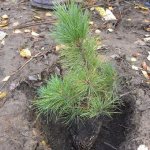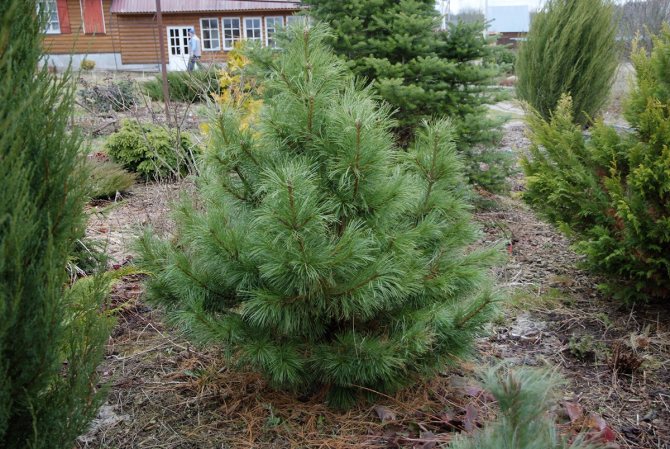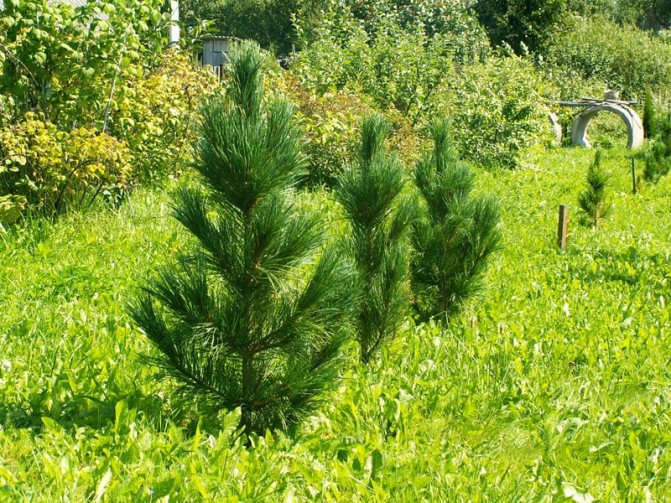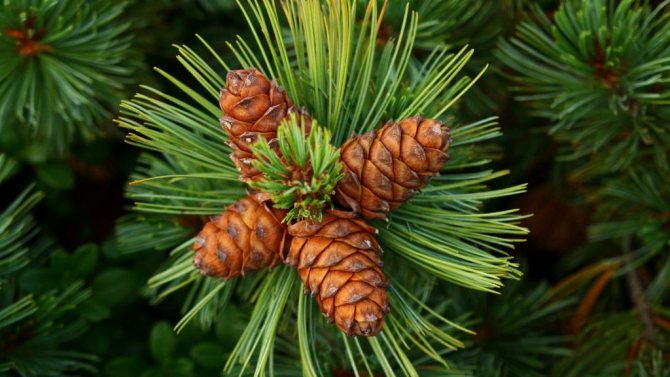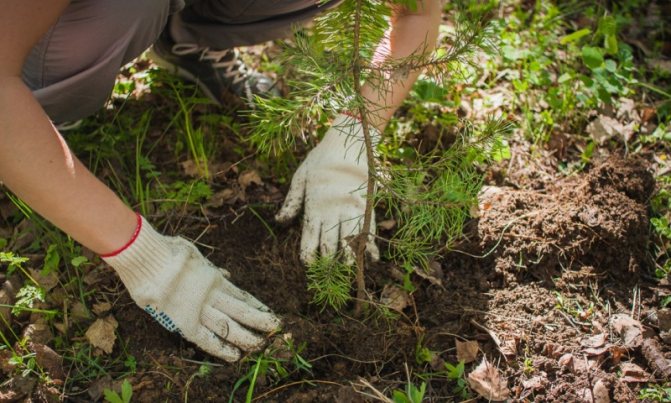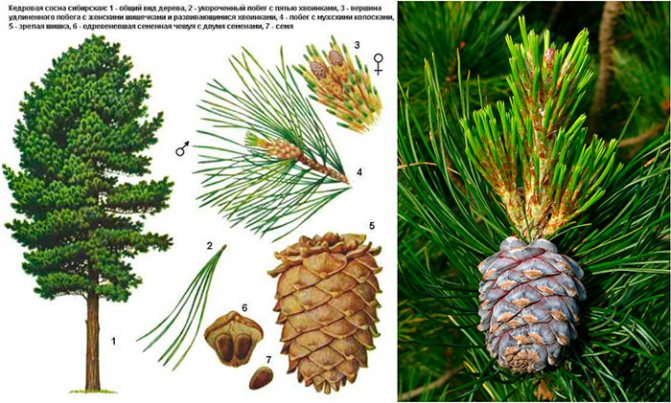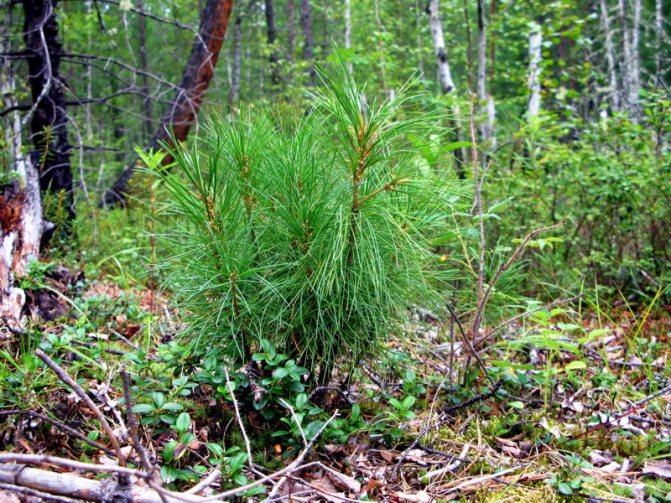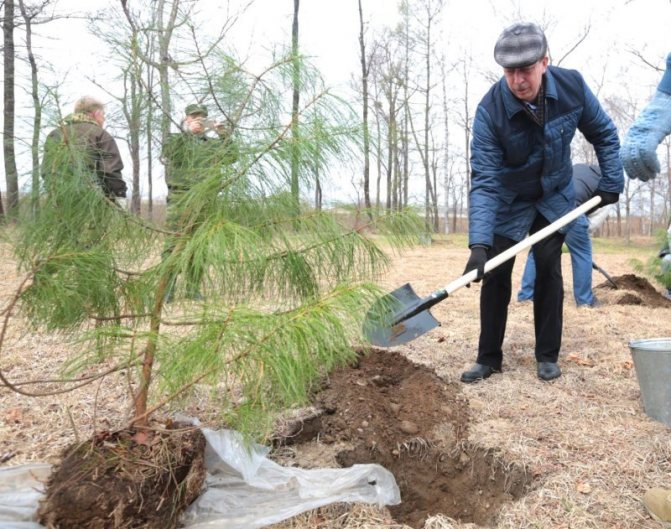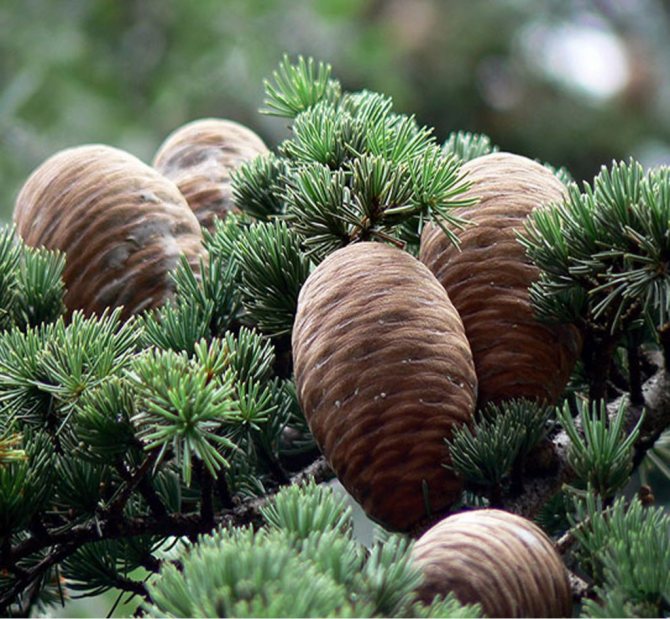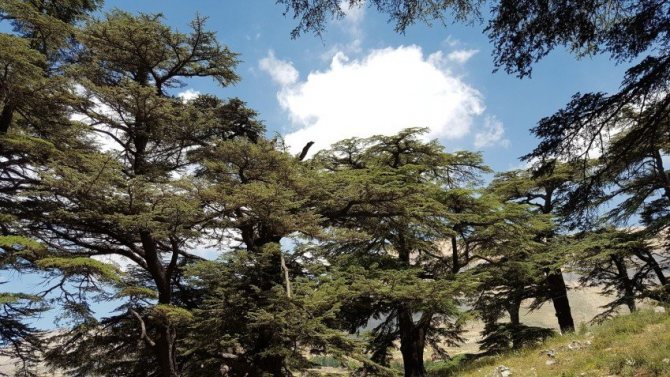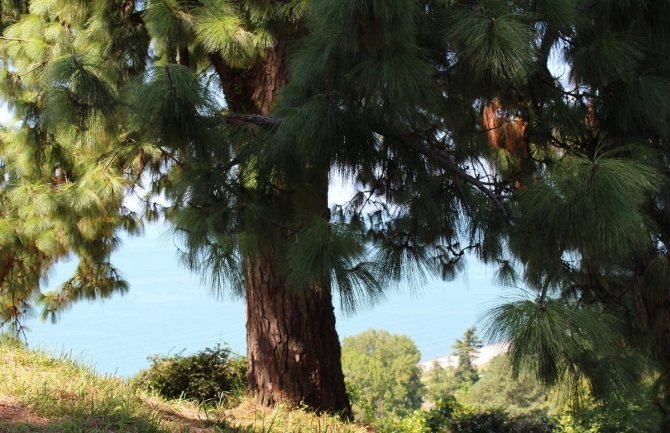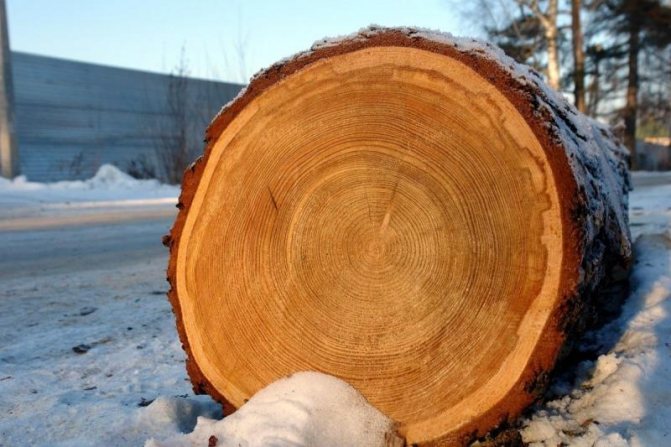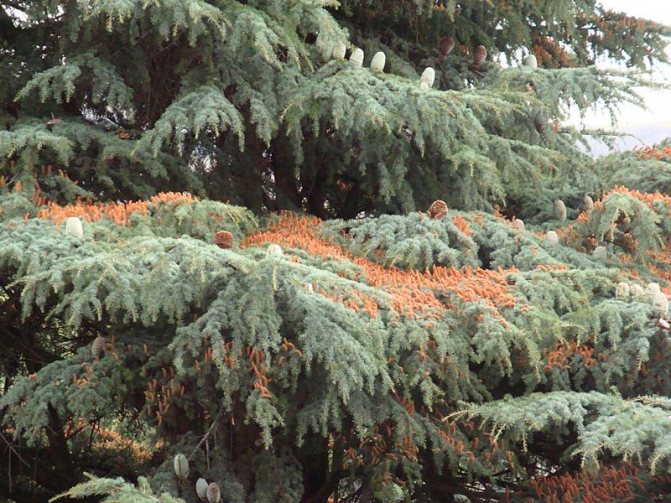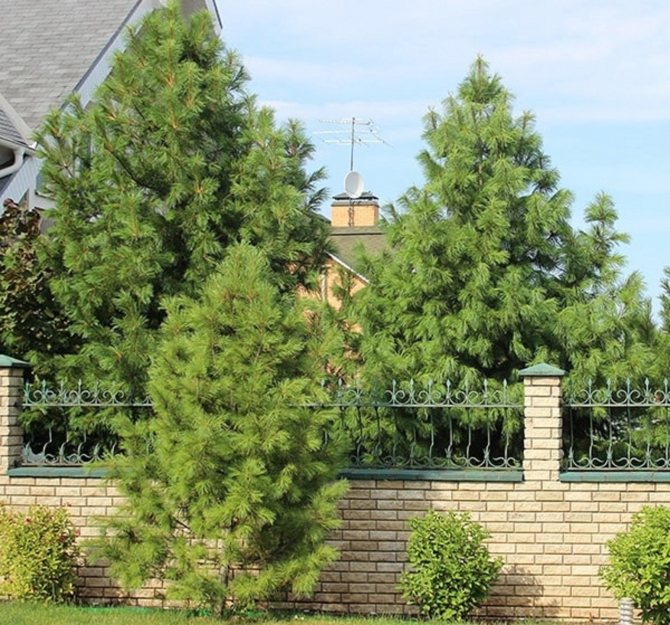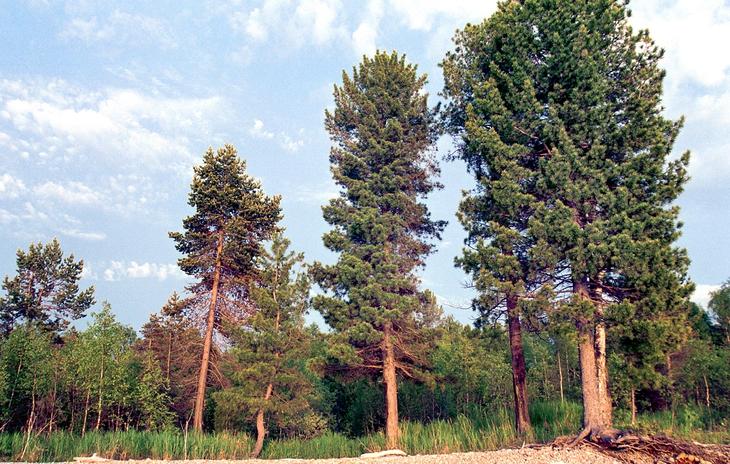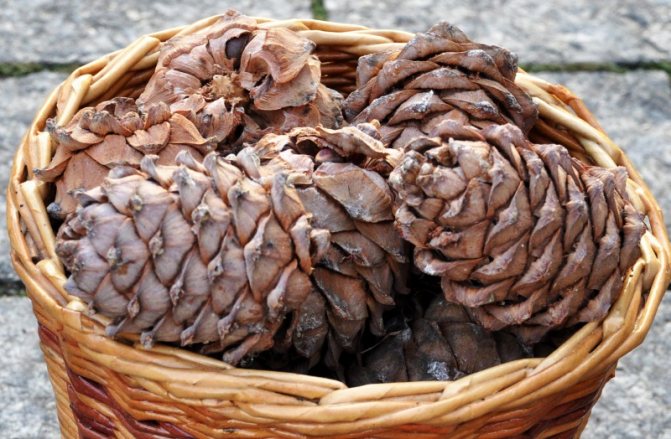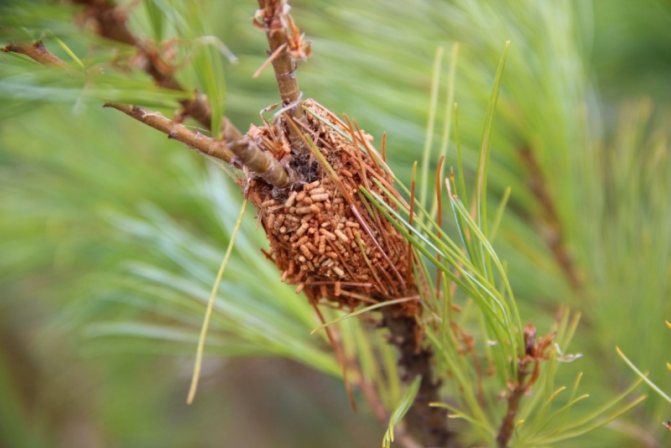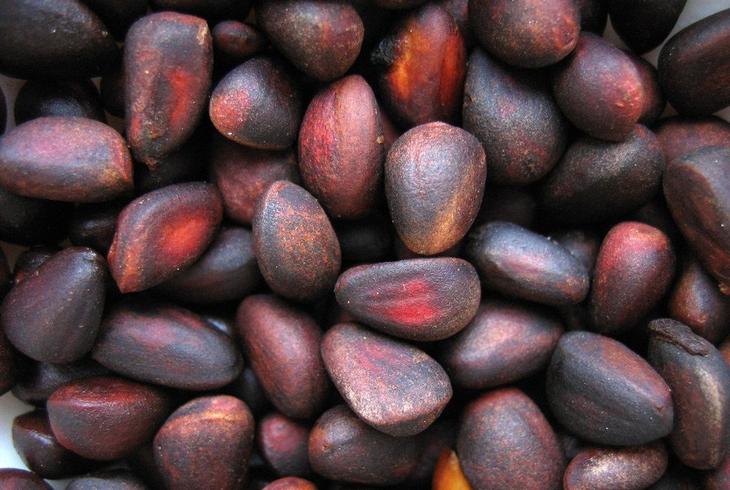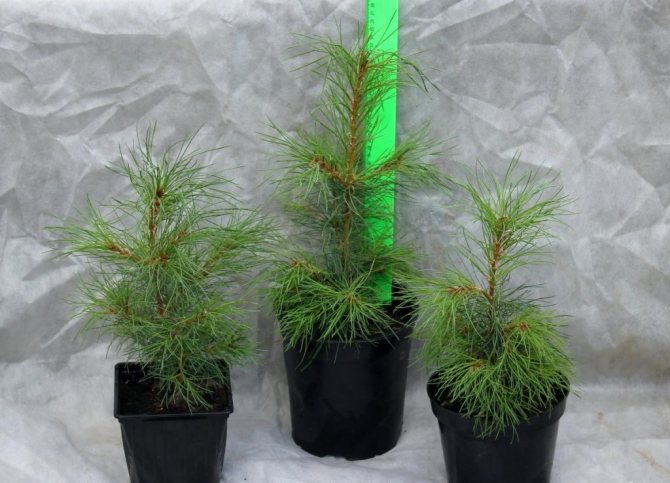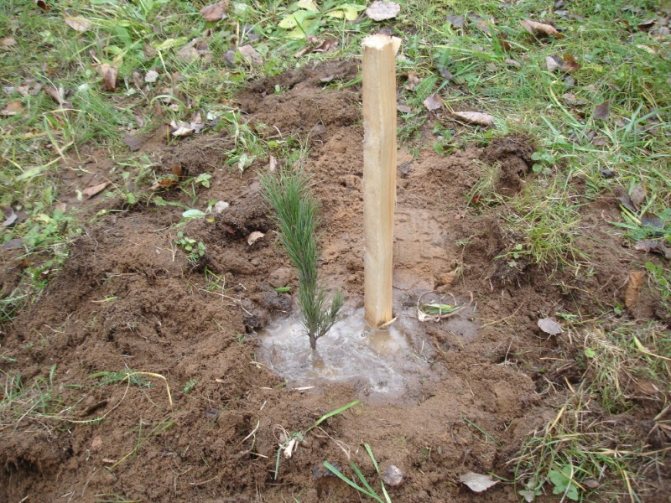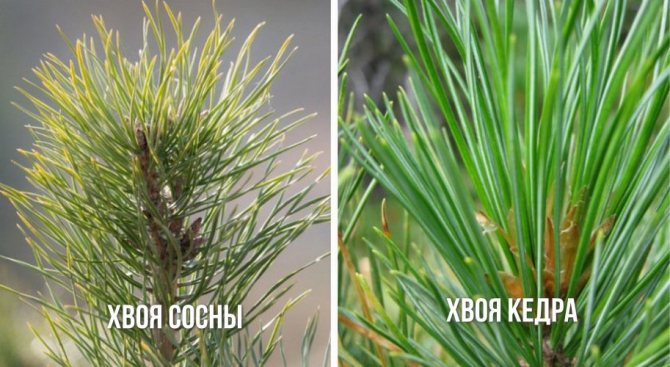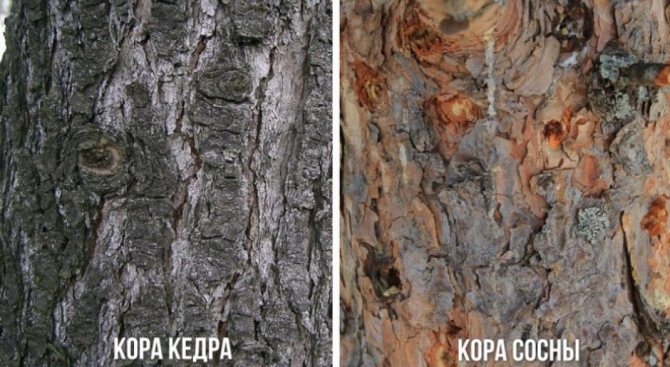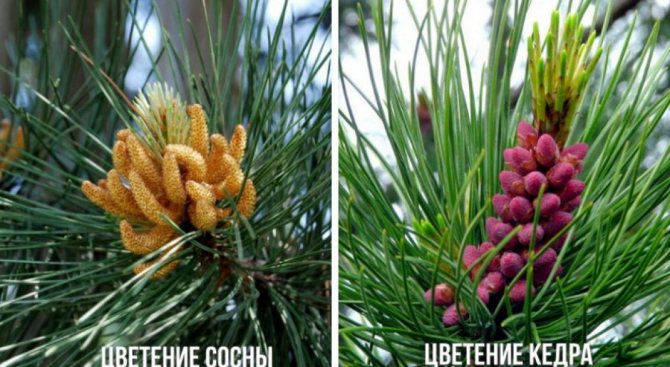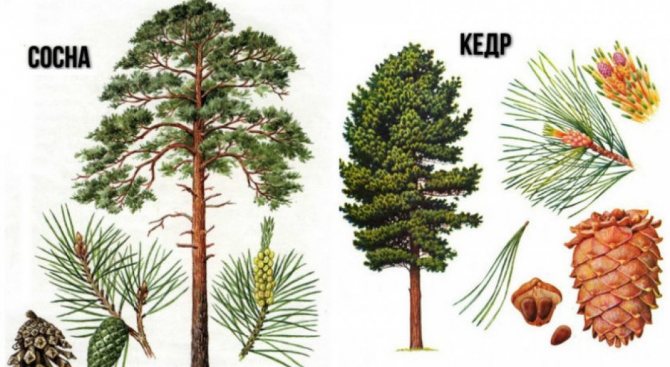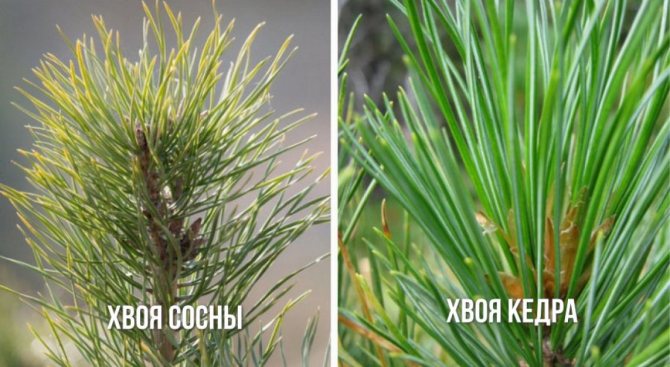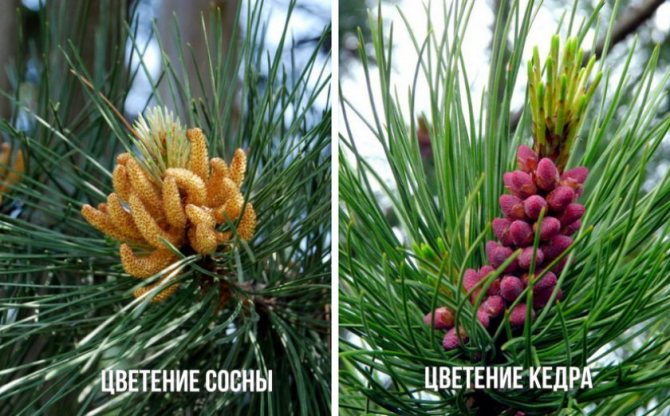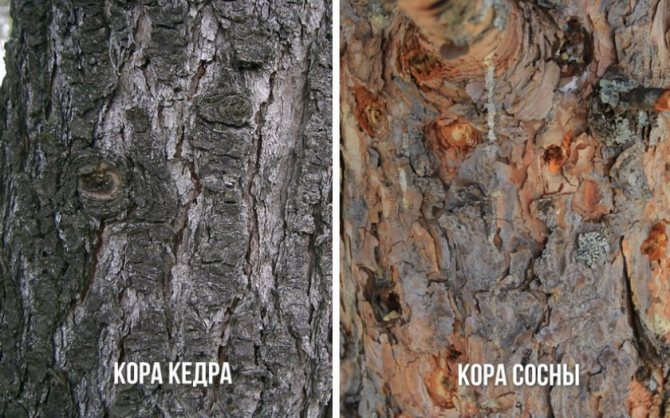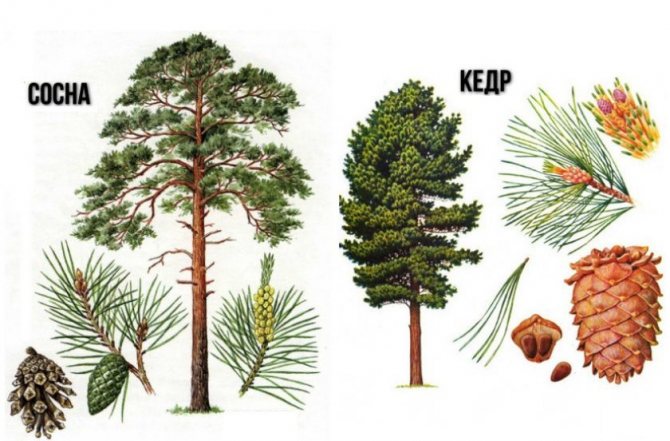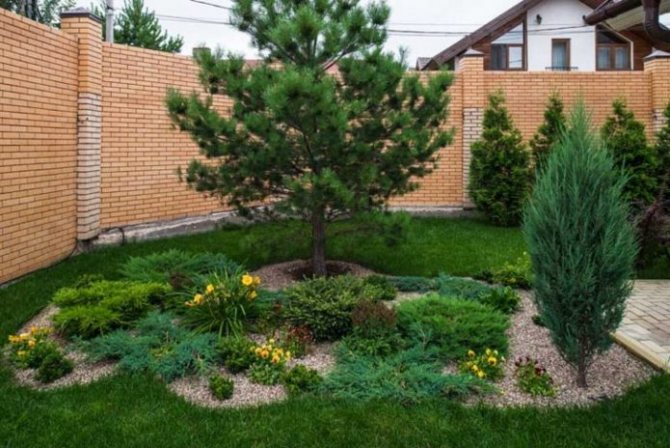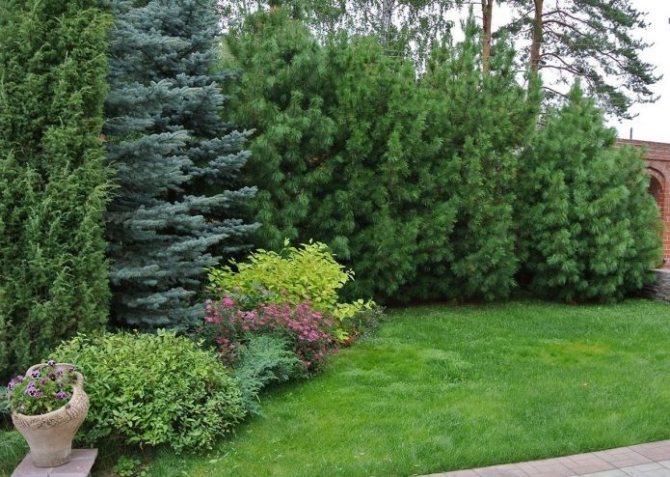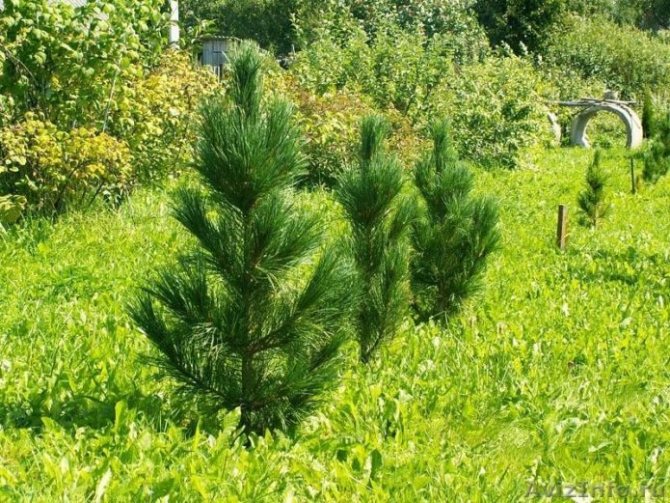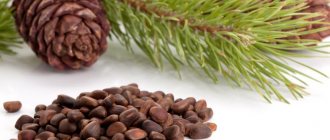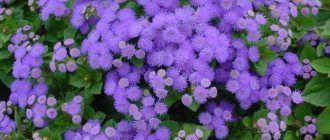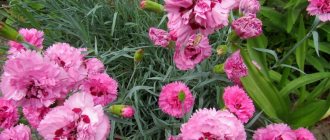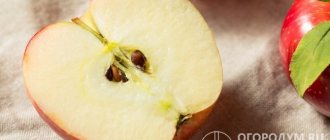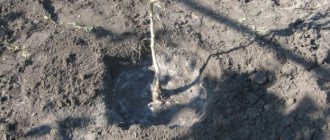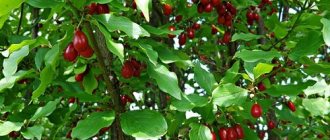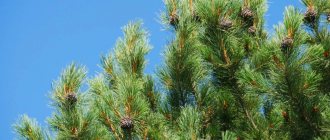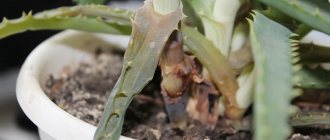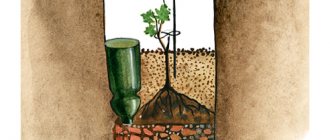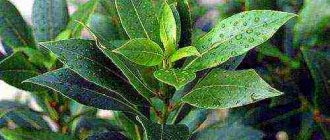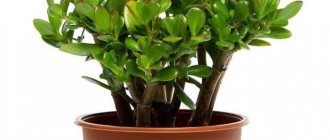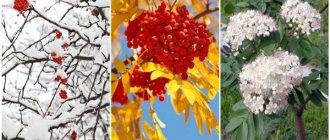The first question that everyone who wants to grow a coniferous giant has to face is: how to properly plant a cedar on your site so that it does not interfere with the rest of the plantings and at the same time is visible and feels good? You also need to decide whether to purchase a ready-made seedling or try to grow a tree from a seed, in this case a nut. The seedling, of course, will save you from the hassle of germinating pine nuts, a long wait for seedlings, which can take more than six months. But it will cost much more than one grown independently, especially since if you have good planting material, you can grow them as much as you like.
It should be noted that the tree, which is considered to be a cedar in our country, strictly speaking, is not such. This is the Siberian cedar pine, which, although it belongs to a different species, still belongs to the same family as the cedar. The cedar is directly subdivided into several types, for example, the Lebanese, Atlas, Himalayan cedar, and so on, and differs not only in appearance, but also in some requirements for growing conditions. Siberian cedar pine, or, as it is also called, Siberian cedar, is more adapted to our climatic conditions, including well tolerates winter frosts, while Lebanese cedar, for example, prefers areas where the temperature in winter does not drop below -25 degrees.
In order to grow a tree like cedar pine on your garden plot, you should know about the features of this species. First of all, it is necessary to take into account the size of an adult tree, which is very impressive and will require space. In height, cedar pine can reach forty meters, while it is distinguished by a powerful, spreading crown and a trunk up to three meters in diameter. Such a giant will need at least 7 m2 of area. It is quite natural that he has an appropriate root system, therefore, it is also impossible to plant a cedar closer than three meters from the house - the root can damage the foundation of the structure. In addition, over time, the tree will begin to cast a shadow, which, in turn, will impose some restrictions on the use of the territories adjacent to this site. Therefore, if there is not enough space in the country, then it is better to plant decorative types of cedar, which are more modest in size.
Preparing for landing
The correct cultivation of a coniferous tree is not an easy task. It is necessary to choose a place, time, suitable planting material and prepare it.
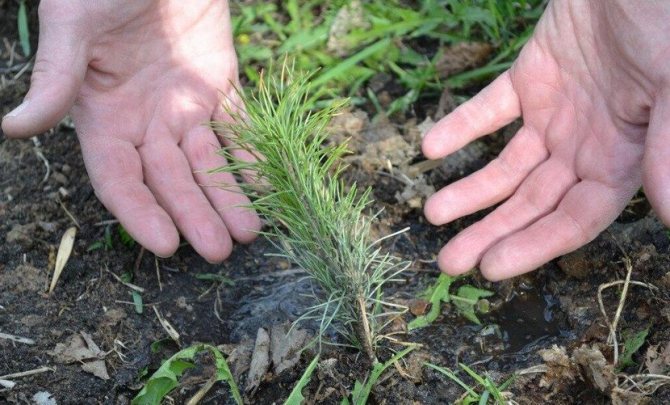
Landing dates
You can plant a tree at any time of the year, except for winter. But seedlings, which were planted in spring (April - May) or autumn (October - November), take root best of all.
Also learn how to tell the difference between cedar and pine.
Preparation of planting material
If you plan to plant cedar with seeds, then in the fall you need to collect the cones and remove the kernels. Next, you need to carry out stratification, which involves the following steps:
- Pour seed material with water at room temperature for 6 days.
- The fluid must be changed every 48 hours.
- Prepare a mixture of seeds and peat. Leave it at a temperature not higher than + 28 ° C for 2 months, stir occasionally and add water.
- Then it is necessary to place the container with the mixture in the room (until the moment of sowing), where the air temperature is within the range from + 5 ° С to + 10 ° С.
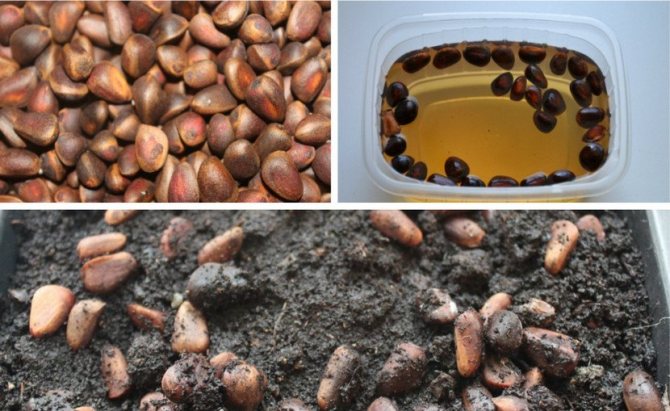

Saplings and cuttings do not need additional processing.
Selection and preparation of the landing site
For planting, it is recommended to choose a site that is more spacious, since in an adult cedar the branches spread out in diameter more than 2 m.It is also necessary to make sure that the foundations of the buildings are no closer than four meters to the plant. The area should be sufficiently lit or in partial shade.
Important! The water used in the stratification process must first be brought to a boil and cooled.
Influence on growing conditions depending on the region
Cedars germinate or take root well in the central zone of the Russian Federation. More and more often conifers are planted in the Moscow region, Yaroslavl, Vologda, Kostroma regions.
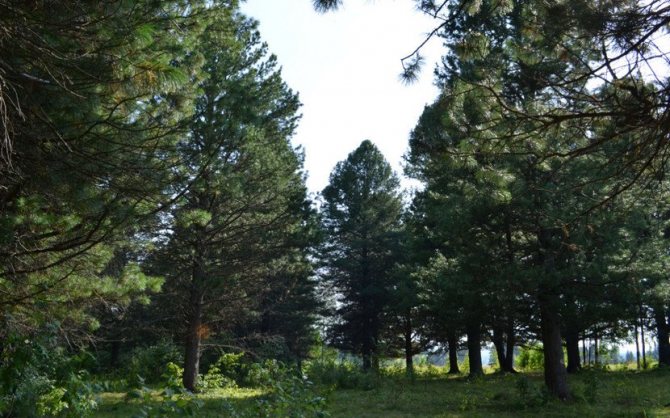

Due to the moisture content of sandy loam and loamy soils, which prevail there, the tree feels comfortable. The peculiarity of cedar is that it can grow on almost any type of soil. The exception is the soils of wetlands. Climatic conditions and rainfall can be compensated for by watering or sprinkling.
Description and varieties
Cedar is a coniferous tree. It remains green throughout its life. Wood made from cedar is characterized by strength and durability. The excellent characteristics of the wood have contributed to the destruction of entire forests.
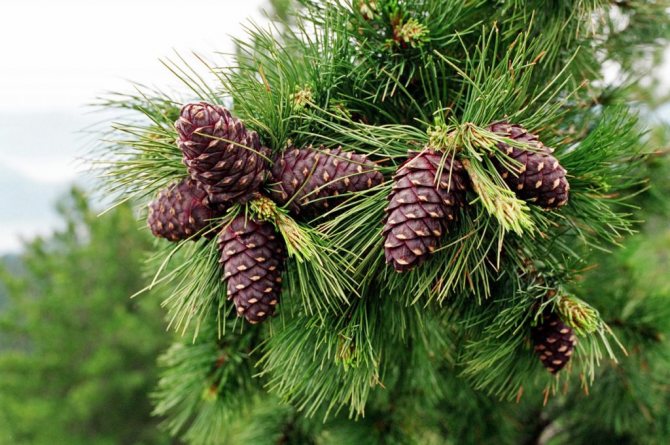

Characteristic:
- The length is 30-60 meters.
- The cones are large.
- Various colors.
- Long life expectancy.
- The wood has a pleasant smell.
- On an adult tree, 1000-1500 cones ripen.
- The needles are bright green in color.
- Branches branch off horizontally.
- There are various forms of the crown.
- The length of the needles is 0.8–6 centimeters.
- It grows in a variety of soils.
- The ripening period of cones is on average 1 year.
Today, thirteen varieties of this tree are known:
- Korean.
- Canadian.
- Mexican.
- European.
- Red.
- Siberian.
- Slate.
- Far Eastern.
- Lebanese.
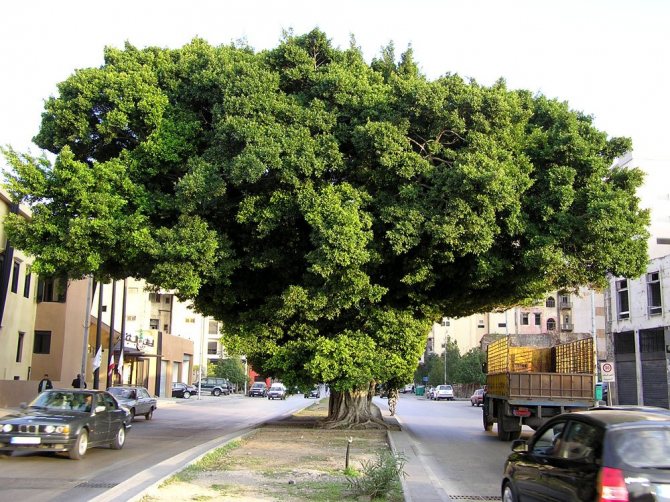

Lebanese
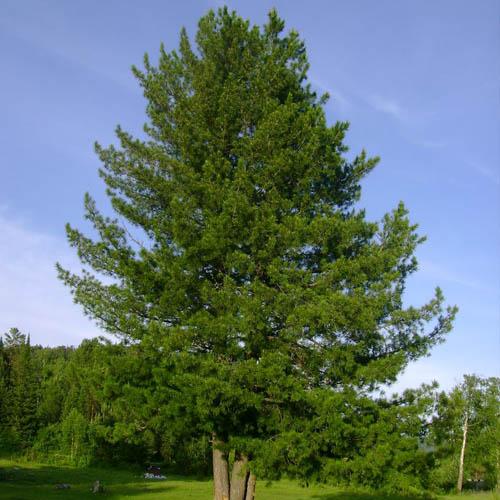

Siberian
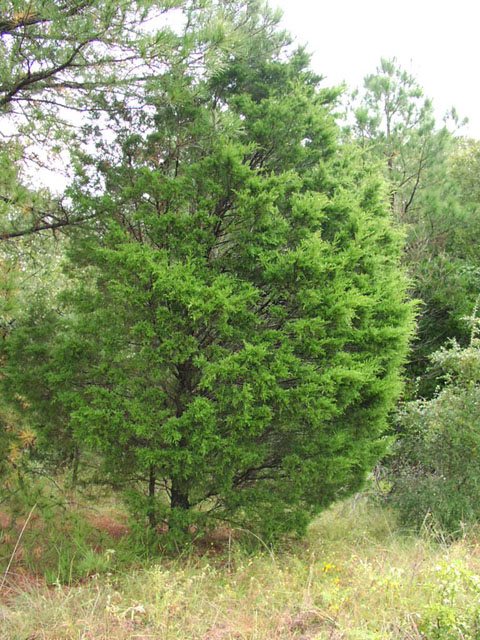

Red


Mexican
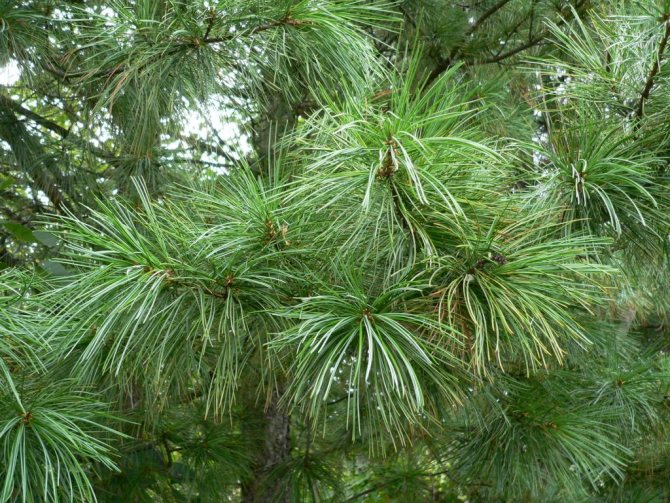

Korean
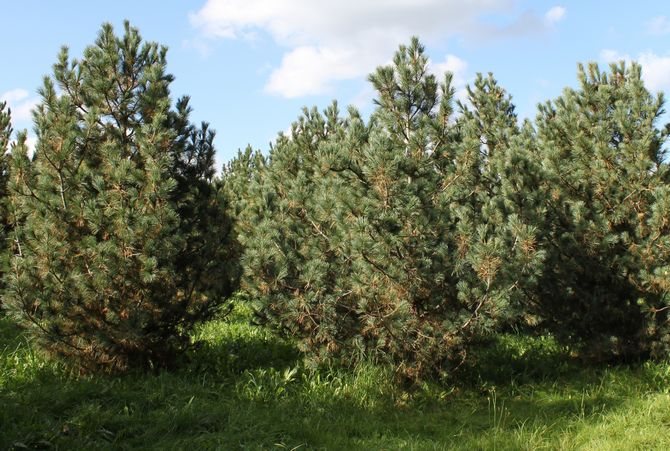

European
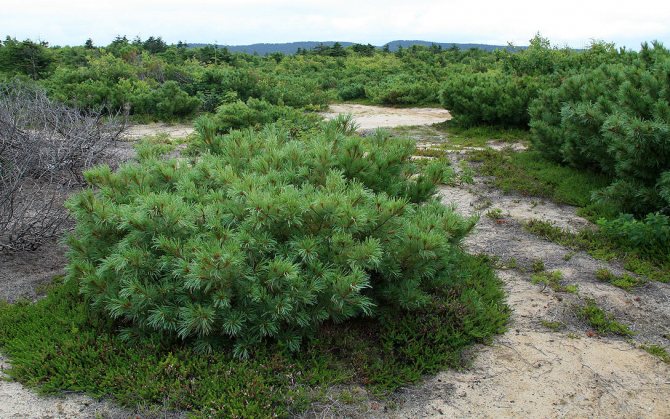

Slate
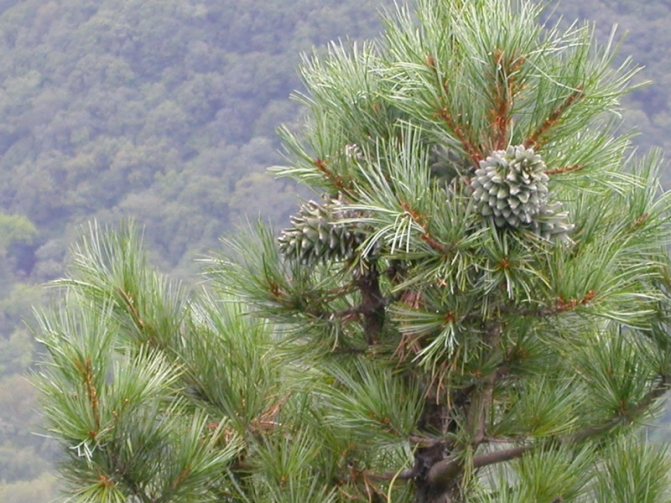

Far Eastern
Correct fit
There are three ways to plant a cedar: using seeds, cuttings (twigs) and a seedling. Each method has its own rational landing instructions.
Did you know? Celtic Druids called the ritual bowl with cedar resin "the cup of life."
Seed
To plant a tree using prepared seeds (as described above), you need to follow several steps:
- Immerse the seed in the ground about 3-5 cm.
- Cover with plastic wrap on top. This is done to protect the landing from bird attacks.
- When the hard shell on the seedlings falls off, it is necessary to remove the polyethylene.
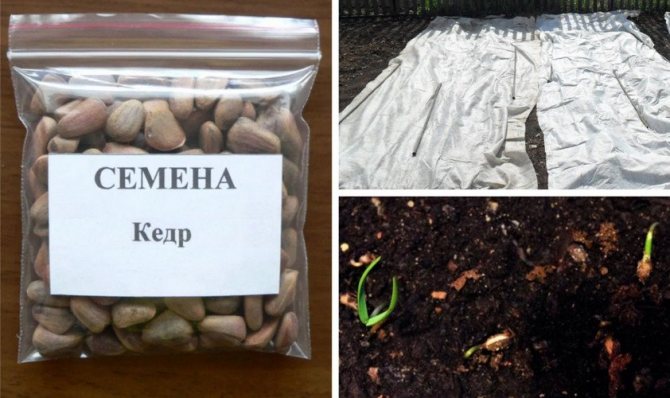

How quickly the cedar rises
The shoots will begin to sprout after a few weeks. But it is recommended to transplant young shoots to a permanent place no earlier than after 2-3 years. The tree grows slowly in the first 5-6 years, but then the process will noticeably accelerate.
Did you know? Even during the existence of ancient civilizations, cedar was considered the best material for construction. The sarcophagi of the pharaohs were made of cedar wood, temples and palaces were built.
Saplings
It is more reliable to plant a formed, strong seedling on your personal plot. To do this, you need to adhere to the following algorithm of actions:
- Dig a meter deep in the ground, width - 2 m (the size of the hole directly depends on the size of the root system of the tree).
- Pour sand into the recess (provided the soil is heavy).
- Then add 80 - 100 liters of compost, dig up.
- Align the roots on the seedling, while holding an earthen ball with your hands.
- In order for the root system to be sufficiently saturated with moisture, it is necessary to immerse it in a container of water for half an hour.
- Next, you should build a hill at the bottom of the depression and spread the root processes along its surface.
- Cover with soil and tamp lightly with your hands.
- Water the circle with about 50 liters of water.
- When moisture is absorbed into the soil, it is necessary to mulch with compost.
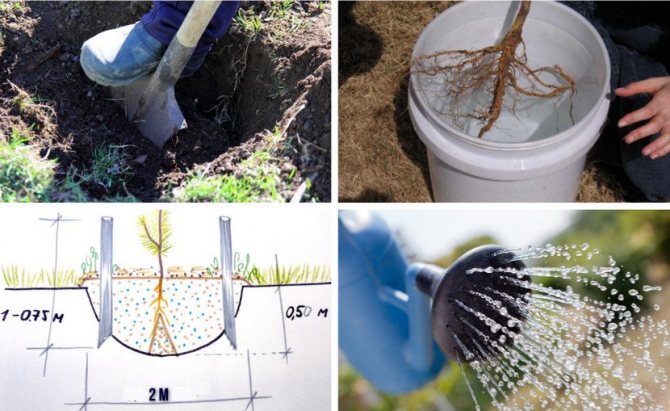

The root collar should always be at ground level. This should be taken into account when deepening the plant, since the soil will settle by 8-10 cm over time.
Twigs
In order to grow a plant that would be distinguished by its attractiveness and accelerated growth, you can graft a twig (stalk) of the described tree onto a pine tree. Let's consider the main stages.
- Cedar branches with a length of 20-30 cm should be cut.
- Remove coniferous needles at the "joint".
- Make an incision with a blade on the rootstock and scion about 3-5 mm.
- Connect the branch with the "mother" plant with the cuts.
- Fasten securely with polyethylene strips.
- After 2 months, the fixing tape can be removed.
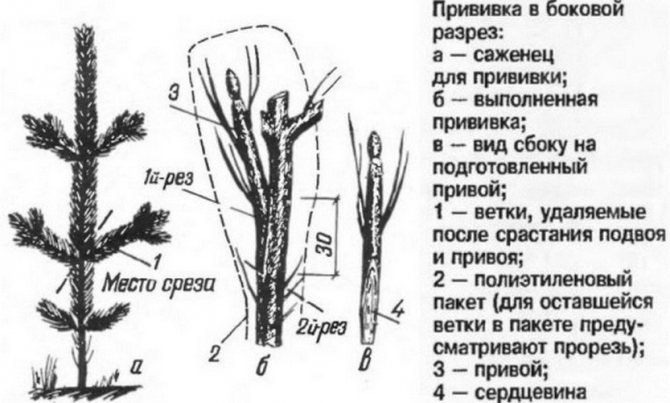

After several seasons, the grafted stalk will "turn" into a full-fledged seedling, which can be transplanted to a permanent place in the summer cottage. And after 5-6 years, cones will form. The above method is very time consuming and is mainly used only by professionals.
Growth rate and fruiting of cedar
Siberian cedar is a majestic tree reaching a height of 45 m. The trunk diameter at the base is 2 m. The plant reaches these growth and thickness indicators by the age of 60–70.
Important! When talking about cedar and pine nuts, most people mean "cedar pine". It is she who inhabits the Siberian taiga and gives delicious healthy nuts. Real cedar grows in subtropical climates; its fruits are not eaten.
The plant belongs to slow-growing conifers due to the short growing season - 40 days a year. For a year, the seedling manages to grow only a few centimeters. The height of a 3-4-year-old plant is 12-20 cm; by the age of 10, the growth of a seedling is 1–1.2 m. After 15 years, the growth rate increases, the annual growth is 20–27 cm.
The Siberian cedar growing in the garden begins fruiting at the age of 20-30 (subject to the correct development of the plant). Under natural conditions, the first cones are formed on a tree only at the age of 50.
Interesting. You can speed up the harvest from a home tree by grafting a twig from an adult fruiting cedar to a young seedling. On the grafted cedar, cones are formed at 6–8 years of age.
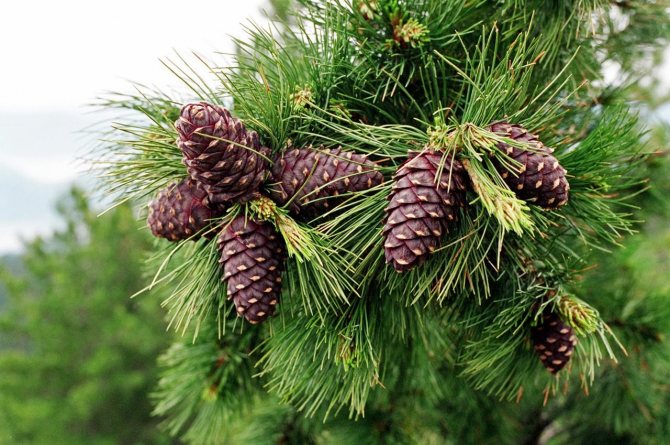

The Siberian cedar growing in the garden begins to bear fruit at the age of 20-30.
Cedar care
Any plant sprouted and planted at home needs care. In order for a tree to develop quickly and fully, to be healthy, several recommendations must be followed.
You may be interested in information about cedar pine.
Watering
In the summer, the cedar receives a sufficient amount of moisture, but during the heat period it is necessary to water it. When the soil dries, the tree should be moistened with water until the liquid is completely absorbed in the trunk circle. In the autumn, watering can be reduced.
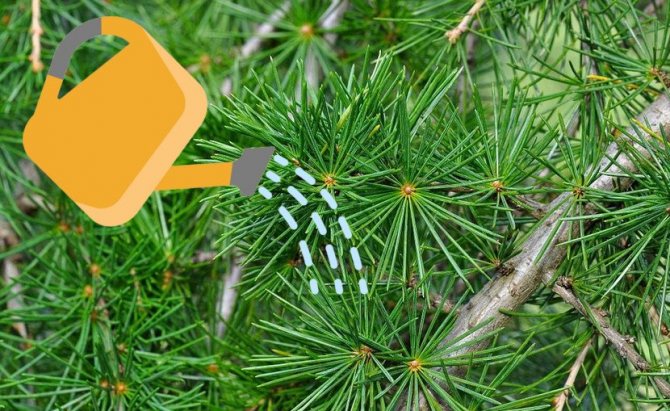

Top dressing
The tree needs feeding twice a season. In March - April, organic fertilizers are applied to the soil. To do this, you can use the drug "Bioclad", dissolving 50 ml of fertilizer in 10 liters of water.
And in September - October they are fed with products that contain phosphorus and potassium. For example, Bona Forte fertilizer for conifers. For one tree, use 80-100 g of the drug.
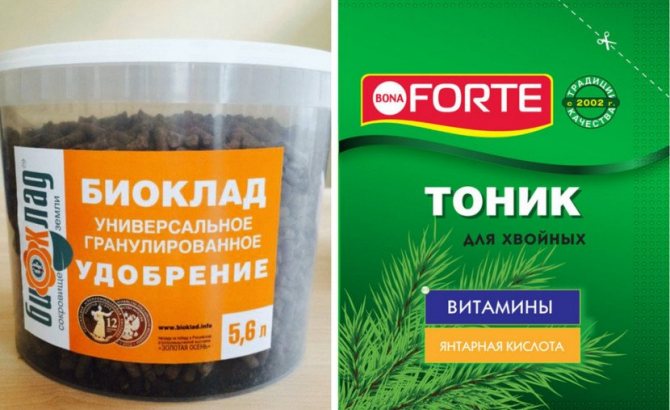

Tree pruning
In order for the shape of the crown to acquire a natural, natural look, you only need to create space for growth. You need to cut only branches with damage, dried out or affected by diseases.
Important! Sharpened garden shears or pruning shears should be used, and the blades should be pretreated with an alcohol solution.
It is not recommended to prune trees under the age of five.
The spring period is more suitable. At the places of the cuts, they are treated with garden pitch.
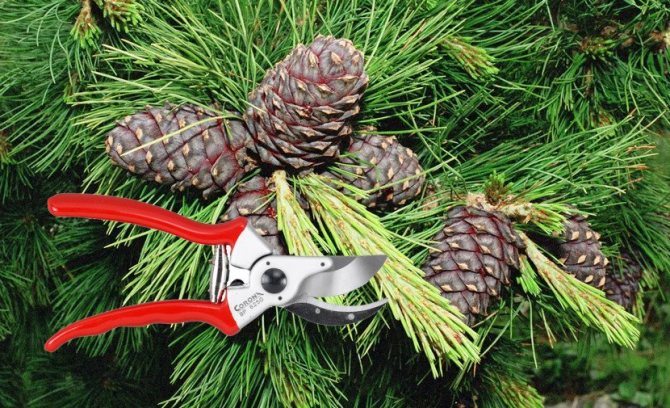

Preparing for winter
When the autumn feeding and water-charging watering were completed, the last step remained in preparing the seedling for the winter frosts. To do this, you need to cover the tree with a net. This will help protect the branches from strong winds and snow adhesion.
Did you know? The cedar is the symbol of the country of Lebanon. The tree is depicted on her flag. However, unfortunately, due to deforestation, there are almost no trees left in this country.
Possible diseases and pests
Often, cedar is exposed only to the fungus. This disease is incurable, but it can be prevented. To do this, they recommend:
- planting material, before planting, treat with fungicides;
- to treat young plants with preparations containing copper;
- remove weeds, fallen leaves and needles in the area of the trunk circle.
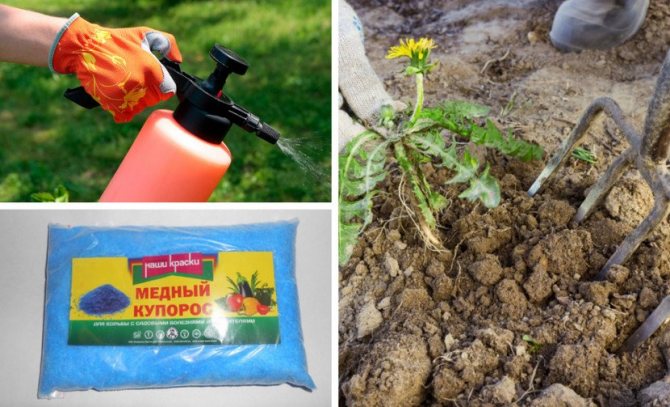

Reproduction methods
There are two ways to grow a cedar:
- reproduction by seeds;
- planting a seedling.
Growing from seeds
Growing cedars from seeds is a painstaking business. The reward for your efforts will be a beautiful tree next to the house.
The procedure is as follows:
- In autumn, ripe healthy buds are harvested and the highest quality nuts are selected from them.
- Cedar seeds are placed in water and kept for three days. During this time, the benign nuts are saturated with moisture and sink down. Empty, spoiled nuts will pop up.
- Nuts, selected for sowing, are placed in a bright solution of potassium permanganate for 2-3 hours.
- After disinfection, the seeds are transferred to a moistened substrate (peat, sawdust, sphagnum). Stratification lasts 3 months.
- Before planting, the seeds are again immersed in a solution of potassium permanganate for a day and dried.
- Fertilizer is applied: a mixture of peat, wood ash, superphosphate in a ratio of 20: 2: 1.
- Sowing is carried out in protected ground (film shelter, greenhouse). The seeding depth is 2, 5 - 3 cm.
- Crops are mulched with peat or sawdust.
- Before emergence, regular watering is carried out. For the prevention of fungal infections, water is alternated with a weak solution of potassium permanganate.
- In a greenhouse, seedlings will live up to two years of age, then the shelter is removed.
- Planting seedlings in a permanent place or in a nursery can be carried out when they reach the age of 6-8 years.
Planting a seedling
This method has several advantages:
- fast survival rate;
- ease of use;
- less labor and time costs.
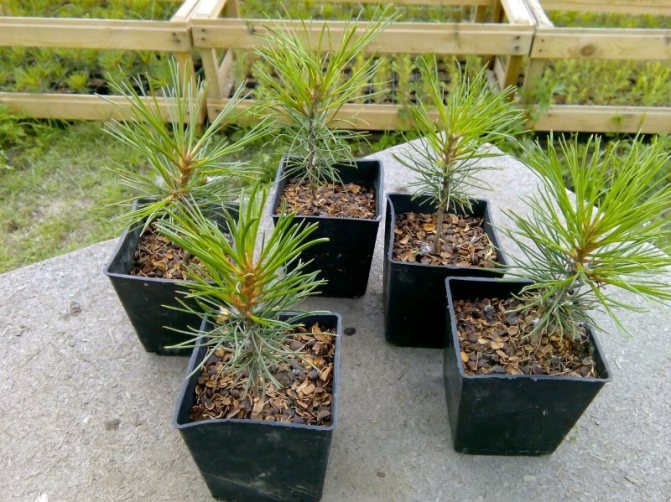

Sapling selection
Cedar seedlings are best purchased at garden centers or specialized stores. Self-dug seedlings do not take root well and can be infected with pests and diseases.
The most suitable age for a seedling to plant on the site is 3-6 years. Choose a healthy, beautiful tree, with straight branches and trunk, free from signs of diseases and pests. The needles should be bright, shiny, dense. The root system of a young cedar should preferably be closed, this will protect the roots from damage during planting.
Planting and caring for a cedar in a pot
You can germinate a seedling in a pot before transplanting it into open ground. Medium-sized containers with drainage holes are best. It is necessary to place a stand under the pot in which the water will collect.
Next, you need to follow these steps:
- pour soil into a container (one third of the total container volume);
- place a seedling in the center;
- cover with the remnants of the earth and tamp;
- water.
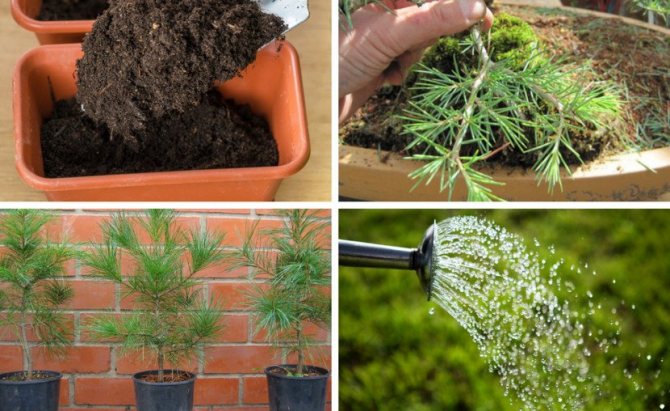

When the plant begins to grow actively, it will need to be transplanted into a larger container. The soil must be fertile and contain peat. It is recommended to add needles to it - to protect against insects.
How to properly land in the open field
Before planting a seedling, you need to know at what depth the groundwater lies. Groundwater can be close to the surface as well as far from the surface.
It is better for a tree if the groundwater is located far from the surface. If the water is close to the surface, then it is necessary to plant the tree on a hill. In this case, the development of the seedling will proceed normally.
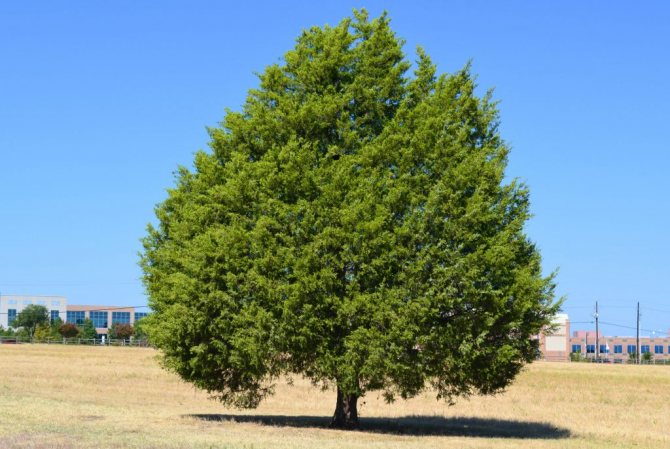

It is recommended to pour rotted manure and compost into the planting pit. Moreover, it is not easy to pour it in, but mix it with the ground. This must be done. There should be no direct contact of the roots with fertilizers. Otherwise, the root system can “burn out” from an excess of nutrients.
In no case should fresh manure be poured. Without air access in this pit, manure will not be re-heated. Moreover, it will be colder there than on the surface. All sorts of bacteria will multiply there, and when they reach the roots of this layer, they will rot and work poorly.
Pick-up time
Found the right place. Now we are preparing the pit. When is it done?
It is advisable to dig holes in the fall:
- The earth will be disinfected.
- The walls of the holes will break through with frost.
It is important that the hole be dug 1–2 weeks before planting a young cedar seedling. Thus, the pit is perfectly weathered. In addition, all the walls of the pit will loosen.
The shape of the planting pit can be varied:
- Round.
- Square.
- Oval.
It is important that the shape of the pit is deep enough (70–100 centimeters). The diameter should be 80-100 centimeters. Thus, the shape of the flowerpot bowl is created. This pit is then filled with fertile soil.
The advantages of such a pit:
- Promotes the rapid development of a young tree.
- Roots will have room to grow.
- The underground and aboveground parts of the tree will develop rapidly.
Site selection and soil preparation
So, we plant a cedar. We found a suitable place, it would be better if it would be a sunlit place. The soil must be fertile.
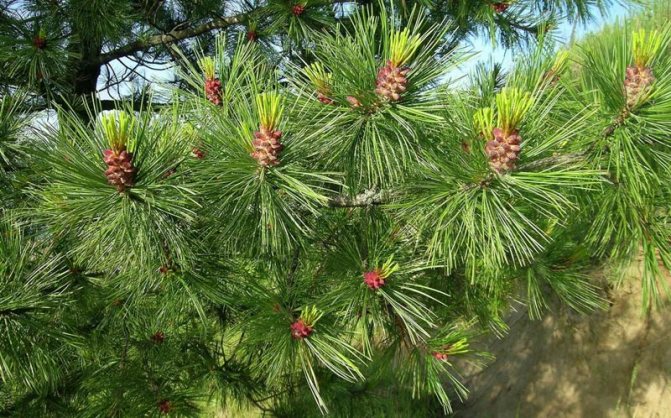

The tree grows better on such soils:
- Lungs.
- Loamy.
- Clay.
- Sandy.
On sandy soils, more watering is required and in winter it will be necessary to remove the trunks to increase frost resistance.
Soil processing and preparation
We start digging. For this, of course, you need a good, sharp shovel (titanium, steel):
- First, we dig in the fertile layer and throw it in one heap.
- Next comes a layer of clay, sand, loam (this layer is the least rich in nutrients, so it is disposed of).
If you dug a hole in the fall, then over the winter it slid a little and weathered. Therefore, you need to dig it up a little, fix it and throw away unnecessary soil. After you have purchased the seedlings, you need to start filling the hole.
Open ground planting process
- We take a fertile layer and throw it to the bottom (10-15 centimeters).
- In order for the soil not to settle, it is necessary to compact the earth with the help of a manual rammer or its own weight (if the earth is too dry, then it can be poured with water).
- Now we throw in more good fertile soil.
- Next, you need to fill in 3-5 buckets of humus or compost (every 10-15 centimeters it is necessary to ram the earth so that the root collar does not fall below the horizon).
- Then you need to move everything with a shovel and add some kind of fertilizer.
- So, until the final filling of the pit, 20 centimeters remain, so you need to drive in two pegs (support for the seedling).
Now we look at the root system of the seedling. If the taproot is slightly broken, then it is necessary to cut off the damaged part with the help of a secateurs. When choosing a seedling, it is necessary to pay attention to the fibrous roots (suction).
Rod roots Is the skeleton of the root system. But the main supplier of nutrients is the thin fibrous roots. The more of them on the seedling, the better the planting material. Moreover, these roots must be necessarily wet, damp. They should not dry out.
We look at a young cedar. The root collar is located between the underground and aboveground parts.This is the transition point of the trunk to the root system. The root collar should be in rhubarb with the plane of the ground. Moreover, the vaccination site must be on the surface. Otherwise, the tree starts branching and branching out.
You can place a shovel on the ground to determine the horizon. After that, you need to try on a young cedar. It should be borne in mind that the earth will shrink. If the cedar is below ground level, then it is necessary to add more earth.
After the correct position has been chosen, it is necessary to backfill with earth. The main ones are the suction roots (fibrous).
Therefore, if you just cover them with earth, then voids will form between them and the roots will dry out there. That is, there will be no direct contact with the ground. In this case, the cedar will be on a starvation diet.
In order to prevent this, you need to follow the following recommendations:
- Holding the tree with one hand, take a little earth.
- Break it down into small parts.
- Gently sprinkle this earth between the roots.
Thus, the voids will be filled, and the earth will encircle the suction roots. In order to achieve a more dense abutment of the earth to the roots, you need to take it lightly and shake it. The earth will become even more compact from such a vibration.
Now the tree is holding on. Further, the young cedar must be finally sprinkled with earth. To improve the contact of the roots with the ground, you need to lightly trample and compact.
You also need to make a small depression for the water. After that, you need to make an earthen roller around the seedling so that the water "does not run away" prematurely after watering.
After that, you need to water the young cedar with water (0.5–2 buckets):
- The water should be warm.
- Water does not immediately go into the ground (it stays on the surface for some time).
- Small individual breasts of earth will go down, as if sagging.
- When the water finally leaves and earthen voids are formed, they need to be filled.
In good weather the cedar will stand just fine. And when the weather is bad, how will he behave? He will be uncomfortable.
In order for the tree to be good, you need to take a pre-prepared rope and tie up the seedling. The rope must be strong and soft. You need to form a loose loop and twist the rope. Do not drag the seedling to one side. He should be free to stand. Thus, the tree will be protected from the winds.
How to tell a cedar from a pine
The main difference, of course, is the fact that pine is much more common than cedar. But you can also distinguish trees by their external features:
- the cedar blooms at the end of June, and the pine - at the end of May;
- pine bark is covered with a lot of cracks;
- cedar needles are collected in bundles of 5, and pine - 2 pieces;
- the cones of the cedar are elongated, and the cones of the pine are more rounded and hanging down.
Growing cedar is a very painstaking task, but the result is worth it. The tree will delight you, your children and even grandchildren with its appearance, fresh air and many useful products that can be made from pine needles, resin and cones.
Which cedar to choose
Cedar is a tall evergreen monoecious tree that can grow up to 50 meters. The bark on the trunk of adult plants is scaly, cracking. It has two resin passages in the epidermis. The crown is spreading. The needles are needle-shaped, hard and prickly, collected in bunches. The color of the needles ranges from rich bluish green to silvery gray.
Traditionally, such conifers known to us as the Atlas, Himalayan, Lebanese, Cypriot cedar belong to the genus of cedars (Cedrus). However, all these species are subtropical and in our country can grow only in the South Caucasus and Crimea. But there are conifers that belong to the genus of pines (Pínus), but they are very close to the cedar species and grow in our area. Therefore, it is about them that will be discussed in our review.
— Siberian cedar pine or Siberian cedar (Pinus sibirica) - grows in height up to 35-45 meters, the trunk can have a diameter of more than one and a half meters. Long-liver, sometimes lives up to 500 years or more. The needles are rigid three-edged, collected in bunches-whorls of 5 pieces. Pollination takes place in June. One tree has both male and female spikelets. The female flowers are then transformed into a cone, consisting of a skeleton and scales. Under each scale there are two nut seeds, which ripen within two years, by September. A fully ripe cone reaches 13 cm. Small nuts (about 1 cm) are dark brown in color. Decorative varieties have been bred: "Oligarch", "Emerald", "Highlander", "Biosphere", "Narcissus", "Tamagotchi" and others.
Siberian cedar Siberian cedar (nuts)
— European cedar pine or European cedar (Pinus cembra) - widespread in the mountainous regions of Europe (does not grow on flat terrain). It is very similar to the Siberian cedar, but is inferior to it in size. The needles are thinner and softer, the cones are slightly smaller and the trunk is more gnarled. Decorative species: columnar, golden-coniferous, weeping, with silvery needles, bushy with intergrown needles, undersized (up to 2 m high), dwarf (up to 40 cm high), variegated.
European cedar (bushy) European cedar (undersized)
— Korean cedar pine or Korean cedar (Pinus koraiensis) - grows in East Asia and Primorsky Krai. The crown is conical, dense, often multi-peaked. Young shoots are brown in color and slightly pubescent. The wood is fragrant, with a beautiful texture, well processed. The needles are triangular, one facet is green, and the other two have white, gray and blue blotches. The cones of the Korean cedar are much larger than those of the Siberian. They differ in color and bent edges of the scales. There are decorative varieties: Anna, Blue ball, Chainbai, Dragon eye, Lilu and others.
Korean cedar Korean cedar "Oculis Draconis" Korean cedar "Nana"
— Dwarf cedar pine or dwarf cedar (Pinus pumila) - a small creeping coniferous plant (up to 1.5 m). The bark is gray, covered with brown spots. It has widely spread branches. They are always pressed to the ground and only the tips are bent upward. Cones are small, oval 3-7 cm long, and nuts up to 9 mm. They ripen within two years, like other cedar pines. If the branches are pressed to the ground for a long time, then they can take root. Ornamental varieties: Glauca, Globe, Draijers Dwarf, Jeddeloh, Dwarf Blue.
Cedar elfin "Jeddeloh" Cedar elfin "Dwarf Blue"
Is it worth planting a cedar in the garden according to signs
Since ancient times, the cedar was called the king of the forests and was treated with honor and respect. It was believed that a person who planted a cedar gains longevity. The first information about him is lost in the mists of time. Already in the Bible, this plant is mentioned as healing and cleansing.
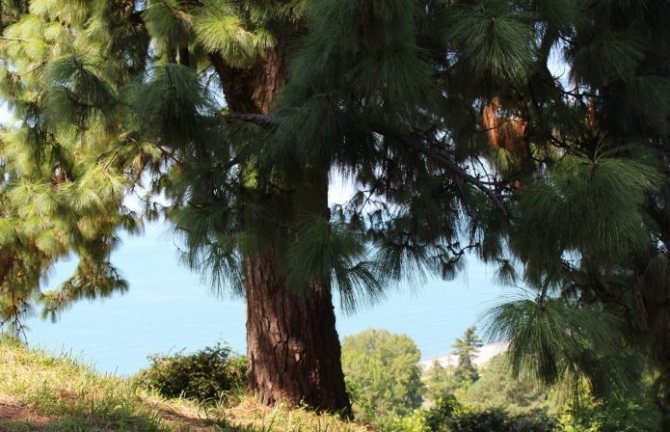

Cedar is a tall tree: its powerful trunk can reach a height of 45 m
Among the peoples of the Middle East, the evergreen giant tree symbolized immortality. The cedar is the emblem of Lebanon, its silhouette adorns the coat of arms, flag, currency and orders. The country has the famous Divine Cedar Forest, protected by the state.
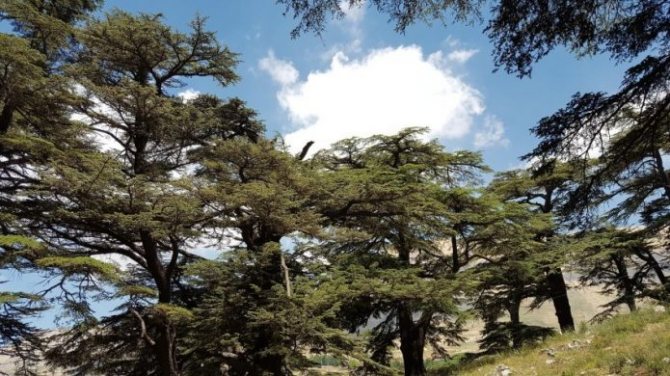

In the reserved Divine Cedar Forest, you can enjoy the fabulously clean air filled with a bitter-resinous aroma
The ancient Assyrians considered the cedar to be the source of pure enchantments that expel evil spirits. They believed that the crown of the cedar was able to heal the sick.
In Mesopotamia, resin-rich cedar cones were used in ritual ceremonies to attract wealth and to protect against dangerous diseases, doors and roofs of temples were made from the wood of the sacred tree.
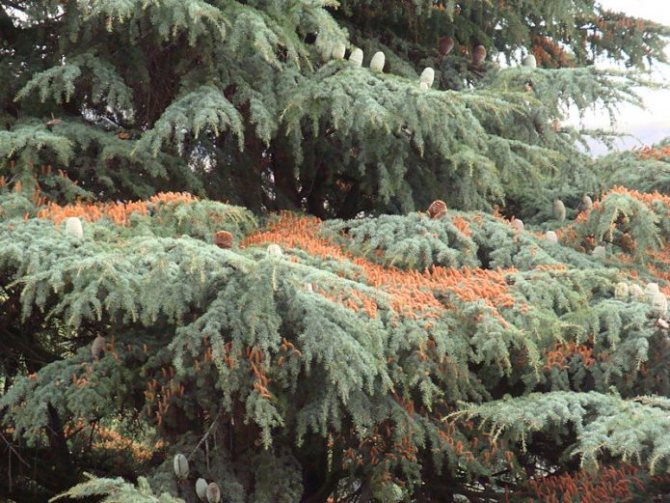

Cedar cones were harvested for the preparation of medicinal balms in ancient Mesopotamia
The Egyptians used cedar oil for embalming, the Indians made reliable frames for light pie boats from cedar. Ancient Celtic priests - druids were sure that the cedar was created by God and considered it a magic tree.
For many centuries, the life of the Slavs was associated with the cedar, which symbolizes wealth, strength and prosperity. He was called the Siberian giant, the king of the taiga, the breadfruit. The inhabitants of Siberia always planted a small cedar near the hut under construction, believing that it protects its owners and gives health. After all, a miracle tree has the same biological rhythms as a person. And in our time, Siberians take care of the cedar forests adjacent to the villages and turn them into forest gardens.
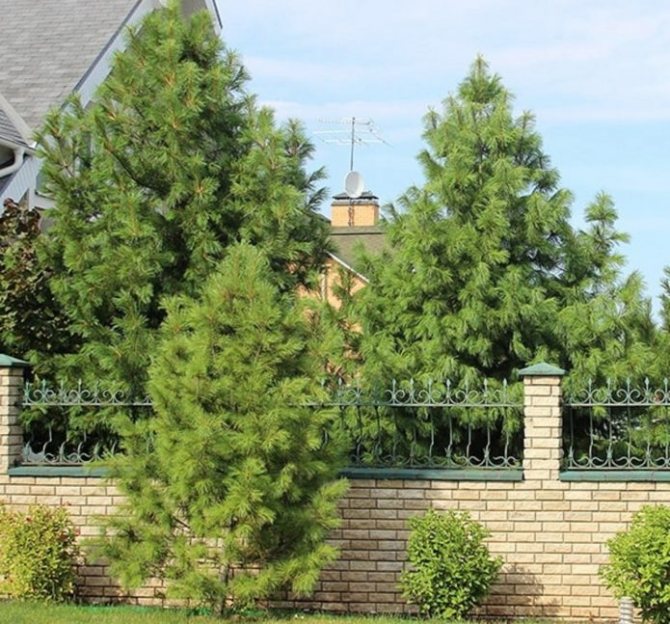

Siberian cedar is prized for its decorative appearance and delicious nuts
It is believed that a cedar, planted away from buildings, will bring abundance to the house and protect from evil spirits. And twin cones on the branches of a tree are a sure sign that twins will soon be born.
However, other beliefs are known, according to which the cedar on the site can cause misfortune.
- A powerful cedar growing next to the house, as if the owner is surviving from it, can bring ailments on him and even cause death. If it grows above the roof, then very soon the dwelling will be completely empty.
- In the distant past, in the north of Eurasia, the cedar was considered a burial tree - because of its resistance to decay, it was planted around graves. And among the peoples of Western Siberia there was a tradition of burial in cedar logs. The use of cedar in grief rituals is associated with the prejudice that it should not be planted in the courtyard.
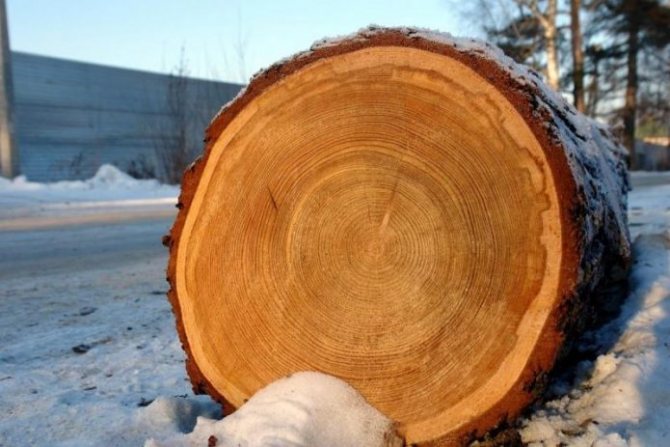

Cedar wood has high strength and resistance to moisture
How to plant a cedar seedling in your garden
A tree feels best in a sunny, warm and wind-protected place. Cedar can be planted both in autumn and spring. Seedlings with a closed root system are ready for planting throughout the season. Open roots are best planted in March or October.
The planting hole should be 25-30% larger than the root ball. Cedar prefers loamy or sandy loam soil with good water permeability.
To increase fertility, the soil from the hole is mixed with peat, ash or humus. At the bottom of the planting pit, experts recommend pouring a layer of needles, which stimulates the good development of the root system.
After planting cedar in the garden, the seedlings are well watered. In the next few years, they are insulated for the winter with agrofibre. Insulation is especially important for frost-sensitive varieties.
Testimonials
About 20 years ago, a cedric grew near the house. Mom cared for him, cherished him. The house was overgrown about 5 years ago. Dad, 86 years old, said in February that he will give some young people a head start. Probably the main thing is whether you believe it or not.
Bruno
Most likely, this is due to the fact that conifers are very fire hazardous, they flash like candles in a fire, and there used to be wooden houses (and even now), hence the omen.
Olga Shubina
My great-grandfather planted a cedar in the country, it is such a miracle, words cannot describe. I went up to him, and he, like branches, pulls, fins. And when the wind blows, the sound of needles ... it is indescribable. A real family member. Every year we collect cones from it.
Mentha piperita
Despite superstition, evergreen cedars are often used in garden decoration. They are unpretentious, look great in single plantings or in composition with other trees, flowers, against the background of a lawn. Thanks to the variety of shapes and sizes, even the most ordinary site can be turned into a fabulous corner. The main thing is not to place trees close to the dwelling.
The most common diseases and pests in the cultivation of cedar
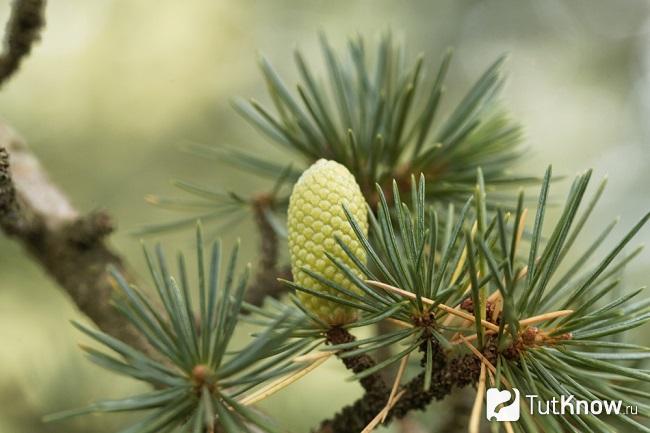

Botanists have identified more than 130 species of harmful insects that pose a problem in the cultivation of cedar. The most dangerous is considered pine cone moth (Dioryctria abietella)
or, as it is also called -
spruce moth
... The larvae of this pest damage the cones of the plant, since this dirty-red butterfly lays its eggs under the scales of only formed cones, while the seeds will not be able to ripen.To fight the pest, it is recommended to spray cedar at the very beginning of flowering with Lepitocide from. This product helps to kill the caterpillars of lepidoptera insects. After a week, it is required to repeat the processing of cedar trees.
A disease that damages old specimens of cedars (more than 40-50 years old) is mottled red trunk rot
, which is also found in the literature under the name
pine sponge
... The disease is provoked by a mulberry mushroom, which looks like a solid brown body. Its surface is covered with dense sprouted moss. Most often, such formations are visible on the lower and especially valuable part of the cedar trunk. To fight, it is necessary to remove the body of the mushroom with the arrival of summer days. It is recommended to lubricate the places on the cedar trunk, where the mushrooms were attached, with any antiseptic or creosote oil.
The roots of all varieties of cedar trees can be affected by the disease root sponge,
which leads to decay of the trunk and subsequent windfalls. There are no effective methods of combating this fungus; the affected plant must be removed immediately in order to avoid infection on other plantations.
To prevent cedar plantations from being exposed to these diseases, it is recommended not to violate the cultivation technique, not to thicken both the crowns and the group arrangement. Purchase only trees with high immunity for planting.

